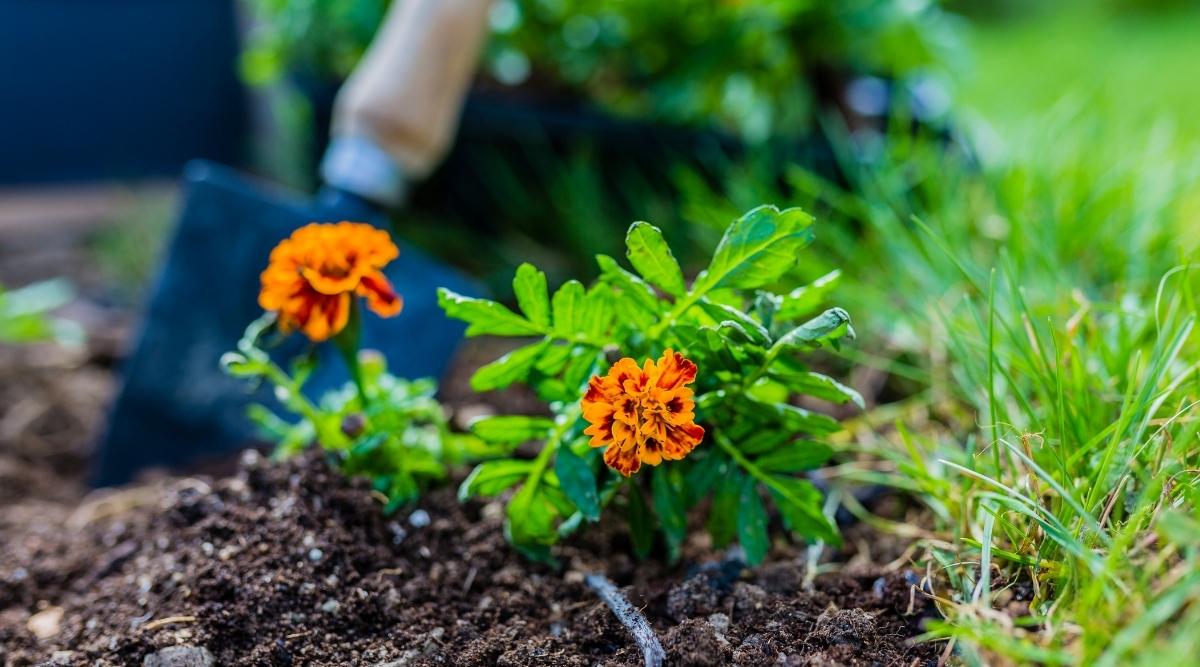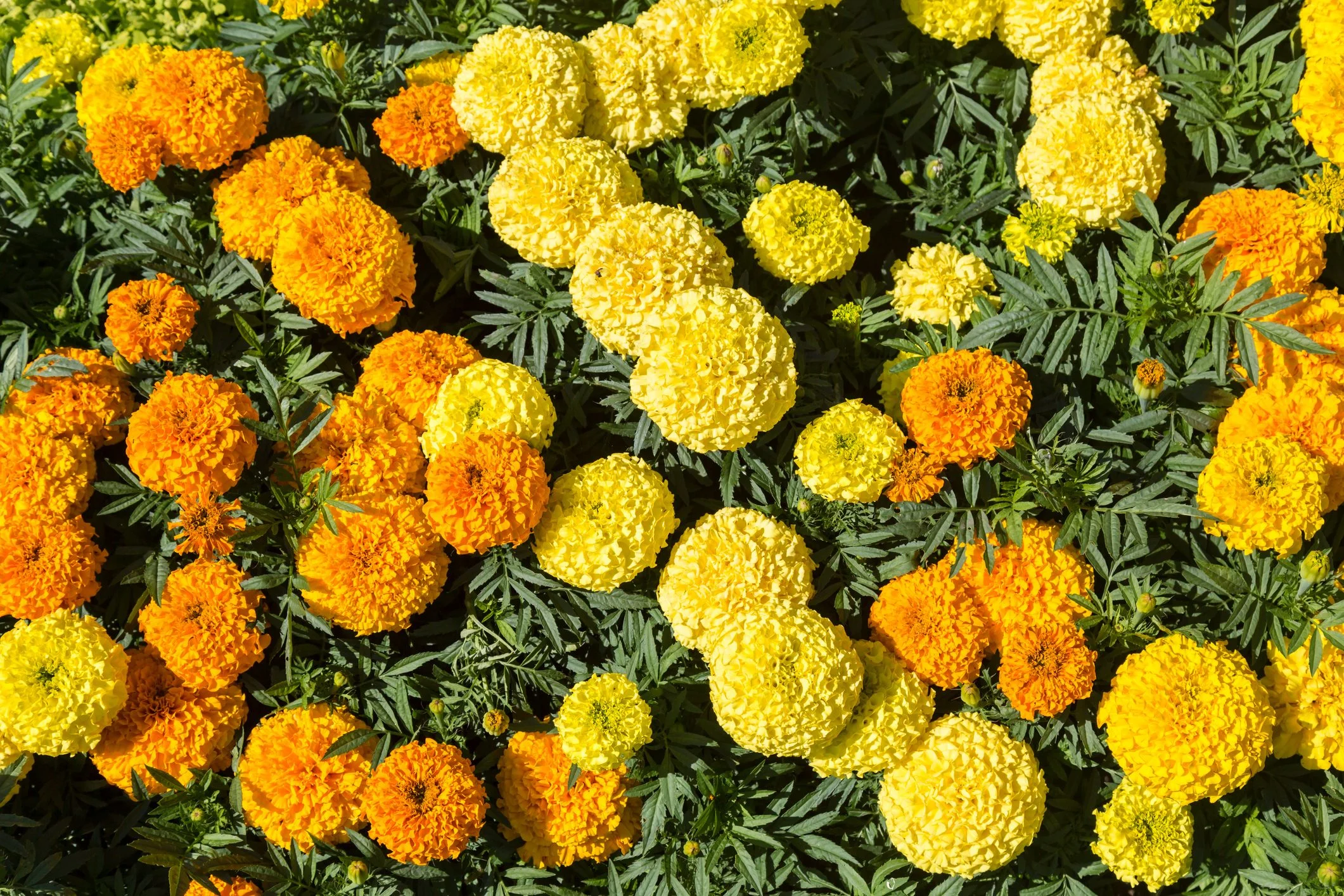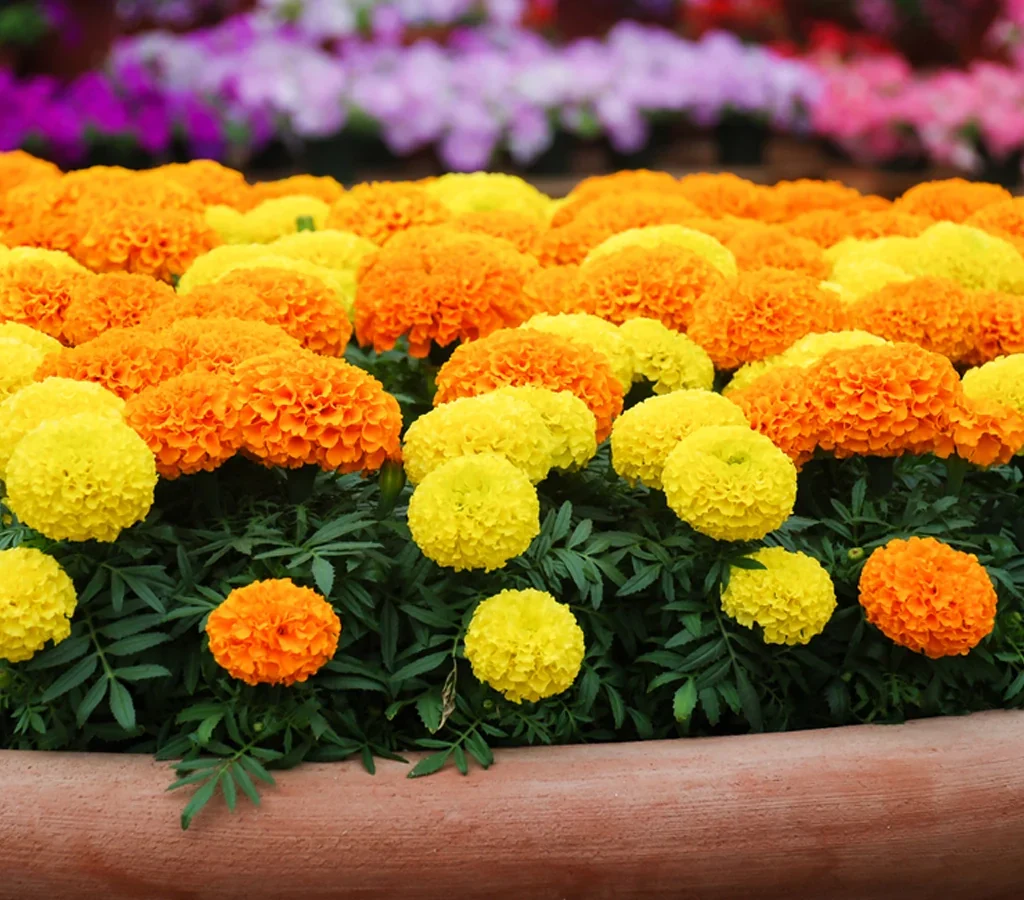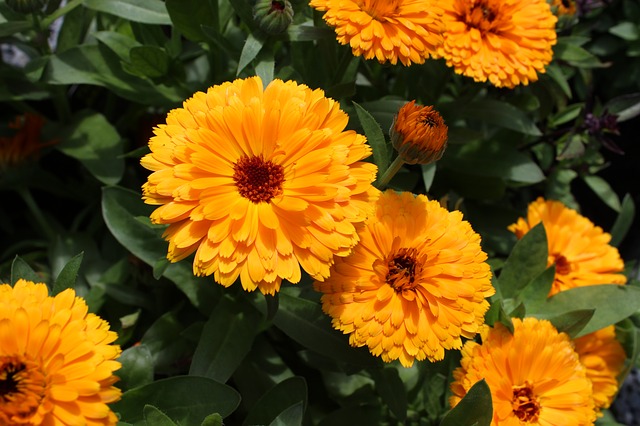Marigolds are among the most popular and beloved flowers in gardens worldwide — and for good reason! Their vibrant yellow, orange, red, and gold blooms bring cheerful bursts of color to any space, whether it’s a large flower bed, container, or window box. Plus, marigolds are surprisingly easy to grow, hardy, and excellent companions for many other plants.
If you’re dreaming of a garden full of these radiant flowers but want to make sure your marigolds thrive, you’ve come to the right place. Here are 10 expert tips to grow colorful marigolds easily — whether you’re a beginner or a seasoned gardener.

1. Choose the Right Marigold Variety for Your Garden
Marigolds come in several varieties, each with unique colors, sizes, and growth habits. Selecting the right type sets you up for success.
Popular marigold types:
- African Marigolds (Tagetes erecta): Tall, large blooms, perfect for bold garden statements.
- French Marigolds (Tagetes patula): Smaller, bushier plants with compact, multi-colored flowers.
- Signet Marigolds (Tagetes tenuifolia): Delicate, lacy foliage and smaller, edible flowers with a citrus scent.
Consider your garden space and desired look. For borders and containers, French marigolds work well. For dramatic flower beds, African marigolds shine.

2. Plant Marigolds in Full Sun
Marigolds thrive in sunlight — at least 6 hours of direct sun daily is ideal for vibrant blooms.
Why sun matters:
- Promotes strong growth and abundant flowering.
- Prevents leggy, weak plants that struggle to bloom.
- Reduces disease risk by keeping foliage dry.
Choose a sunny spot in your garden or balcony, and your marigolds will reward you with their brightest colors.

3. Prepare Well-Drained Soil Rich in Organic Matter
Marigolds prefer well-drained soil to avoid soggy roots that can lead to rot.
Soil tips:
- Amend your soil with compost or aged organic matter before planting.
- Ensure good drainage by mixing in sand or perlite if soil is heavy clay.
- Keep soil pH between 6.0 and 7.0 for best nutrient uptake.
Healthy soil supports robust roots, which leads to more vigorous and colorful plants.

4. Start Marigolds From Seeds or Seedlings at the Right Time
Timing is key when planting marigolds.
When to plant:
- Sow seeds indoors 4-6 weeks before the last frost date if you want an early start.
- Direct sow outdoors once all danger of frost has passed and soil has warmed.
- Transplant seedlings outdoors after hardening them off for about a week.
Starting with seedlings is faster, but growing from seeds is budget-friendly and rewarding.

5. Space Plants Properly to Avoid Crowding
Crowding leads to poor air circulation, which can increase disease and reduce bloom quality.
Spacing guidelines:
- French marigolds: 6-9 inches apart.
- African marigolds: 12-18 inches apart.
- Signet marigolds: 4-6 inches apart.
Proper spacing ensures each plant gets enough nutrients, light, and airflow to produce its best flowers.

6. Water Regularly but Avoid Overwatering
While marigolds are drought-tolerant once established, consistent watering helps young plants thrive.
Watering tips:
- Water deeply at the base 1-2 times per week, depending on rainfall.
- Avoid wetting leaves to reduce fungal diseases.
- Let soil dry slightly between watering; soggy soil invites root rot.
Mulching can help retain soil moisture and reduce watering frequency.
7. Fertilize Moderately for Vibrant Blooms
Marigolds don’t need heavy feeding, but a little fertilizer helps promote bright, abundant flowers.
Fertilizing tips:
- Use a balanced, slow-release fertilizer at planting time.
- Supplement with a diluted liquid fertilizer every 4-6 weeks during growing season.
- Avoid excess nitrogen, which encourages lush foliage but fewer blooms.
Feed your marigolds just enough to keep them healthy and flowering profusely.
8. Deadhead Regularly to Encourage More Flowers
Removing spent flowers, or deadheading, is a simple way to prolong bloom time and keep your plants looking tidy.
How to deadhead:
- Pinch or snip off faded blooms just above the next set of healthy leaves.
- Do this consistently throughout the flowering season.
- It redirects energy from seed production to more flowering.
Deadheading helps maintain a colorful garden from spring through fall.
9. Watch Out for Pests and Diseases
Marigolds are generally pest-resistant, but they can face issues like aphids, spider mites, or fungal diseases under certain conditions.
How to manage problems:
- Inspect plants regularly for insects; wash aphids off with a strong water spray.
- Maintain good airflow and avoid overhead watering to prevent fungal infections.
- Use insecticidal soap or neem oil if pest infestations occur.
Healthy cultural practices usually keep marigolds happy and pest-free.
10. Use Marigolds as Companion Plants for a Healthier Garden
Marigolds are known to repel many harmful insects and nematodes, making them excellent companions for vegetables and other flowers.
Companion planting benefits:
- Protect tomatoes, peppers, cucumbers, and beans from pests.
- Attract beneficial insects like ladybugs and pollinators.
- Enhance overall garden biodiversity and health.
Plant marigolds near your vegetables and watch both thrive together!
Bonus Tips for Growing Colorful Marigolds
- Choose diverse colors and varieties for a lively, eye-catching garden.
- Try container gardening for patios and balconies to enjoy marigolds in small spaces.
- Collect seeds at season end to grow next year’s garden easily.
- Protect from extreme heat with afternoon shade or more frequent watering during scorching weather.
Conclusion: Your Garden, Brighter and Happier With Marigolds
With these 10 tips, growing colorful marigolds is not only easy but fun! Their radiant blooms light up any garden corner and bring cheerful vibes all season long. From selecting the right variety and planting in sunny spots, to proper watering, feeding, and pest control — each step helps your marigolds thrive.
Ready to bring vibrant yellows, fiery oranges, and rich reds to your garden? Grab some marigold seeds or seedlings, follow these tips, and start your colorful gardening adventure today!
If you want, I can help you design a marigold planting plan or suggest the best varieties for your climate. Just let me know!





